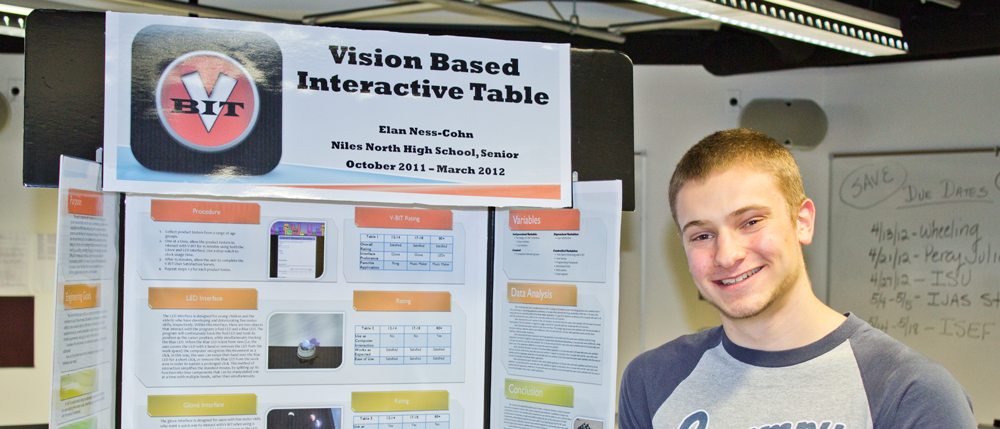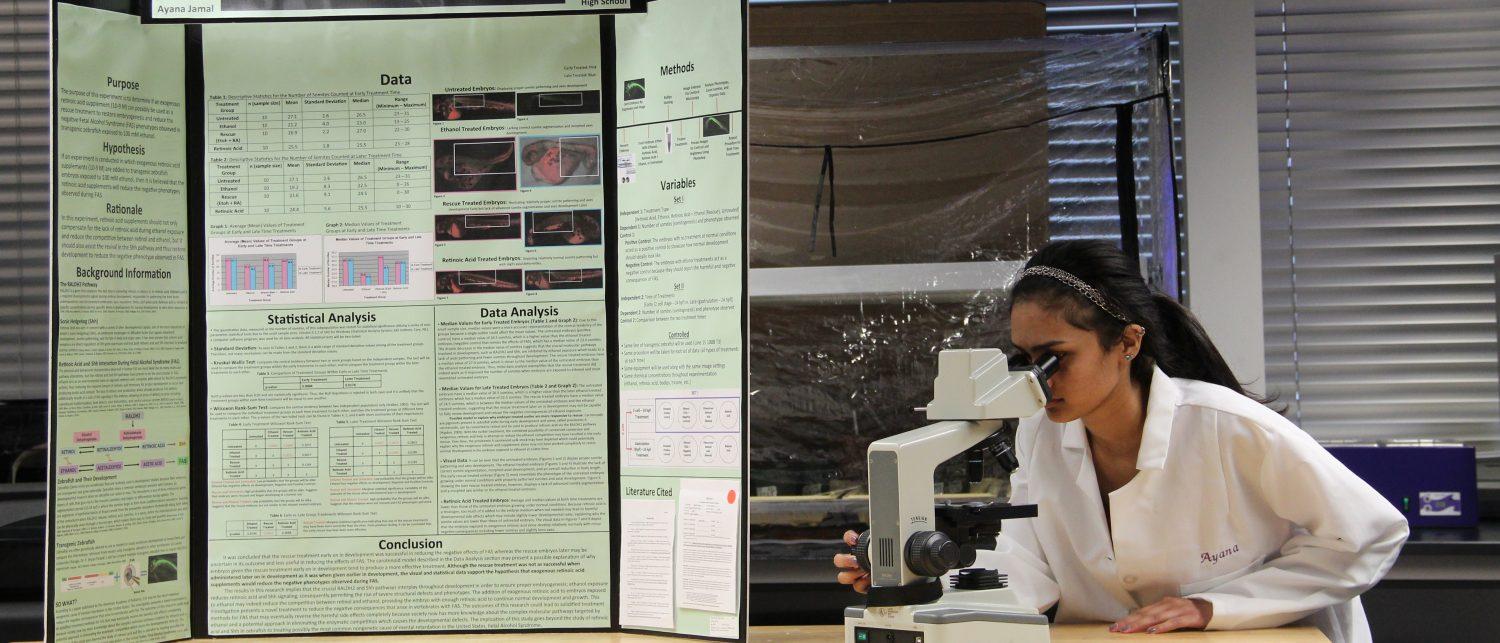Elan Ness-Cohn started his senior year on a mission to create a science project like none before. A a student in the STEM Inquiry & Research class (SIRS), an independent science research course run by Jacklyn Naughton, Ness-Cohn has seen his last two science projects make it to the international science fair. His project from sophomore year consisted of a keyboard he manufactured that converted the mechanical energy from typing into electrical energy used to power small devices such as iPods and cell phones. Junior year’s project was a little more sophisticated: an autonomous lifeguard to protect swimmers and was to be used at understaffed beaches. Ness-Cohn made a “cannon” able to automatically locate and target an object (in the real life case, a distressed swimmer) and shoots an object (a life preserver) at the specified target. Both times, Ness-Cohn was admitted into the INTEL International Science and Engineering Fair (ISEF). This year however, Ness-Cohn was looking to one-up his previous projects, and designed a project on a completely different level.
V-BIT
Ness-Cohn’s current project is called Vision-Based Interactive Table, or V-BIT for short. The goal of V-BIT is to simplify user to computer interfaces to individuals that lack the necessary motor skills. V-BIT is designed to enhance the space of computer screens for people who would ordinarily have trouble using the regular desktop and laptop computers, common among younger children, the mentally disabled and the elderly. Ness-Cohn was inspired to design a project of this caliber after noticing some of his family members who struggled with using computers. He wanted to come up with a way to fix this problem.
Designing V-BIT was not easy; it took countless hours and many weekends to write the computer code that went in designing the program, testing it out, going back to the drawing board and reworking the code. When Ness-Cohn finished his first model of V-BIT, it had three elements to the program. He created a “Pong” game, a word jumble game and a station for creating music. Ness-Cohn gradually reworked and rewrote his V-BIT program to make it top-notch for testing.
In his experiment, Ness-Cohn tested whether or not V-BIT was successful in performing its tasks. For this, he went to the Sager Solomon Schechter Middle School and had sixth, seventh, and eighth graders try out V-BIT. He then had his grandparents and their friends try out V-BIT. After they played around with V-BIT for a while, Ness-Cohn asked them to take a survey on the different aspects and the quality of V-BIT. The results from the survey showed that most of the respondents were satisfied.
The real test would come at the Illinois Junior Academy of Science regional fair on March 17 at Niles North, where Ness-Cohn competed with other science projects in all different categories for a spot at going to ISEF. “I think that V-BIT was my most complete project, so I felt good about going into the regional fair this year,” Ness-Cohn said. In the end, Ness-Cohn proved to be too much for his competitors, taking home the best in category award for engineering, an award he has taken home(although in other categories) for the fourth straight year. Additionally, Ness-Cohn won the American Nuclear Society award, the National Society of Professional Engineers award, the Intel Excellence in Computer Science award, the Jacklyn Naughton Inspirational award and the chance to compete at ISEF for a third year.
On going to ISEF for a third year, Ness-Cohn is happy to tag along for the ride. “The top and most challenging field [at ISEF] is the engineering category, so I’m not going to ISEF with the mindset of winning it all. I’m more interested and excited to see what other kinds of engineering projects will be at the fair and see whom I am competing against.”
Totaling $1450 in prize money, Ness-Cohn blew away at the regional fair, but doesn’t take all the credit for his accomplishments. “The success in science research is all about Mrs. Naughton, my sponsor. She truly is a master teacher that has inspired a generation of students,” Ness-Cohn said.
Success in the science department is nothing new for Niles North. Naughton, who oversees the 40 or so projects in the SIRs class, has been fostering her students’ scientific abilities since she started at North in 1989. Since then, Naughton and her students have won the science fair 22 times in a row. How does one class generate so much success in the science realm? According to Naughton, SIRs is so successful because, “Scientific inquiry and independent study [which is the basis of the class] taps into more learning skills than any other class.” Skills such as problem solving, critical thinking, and the ability to be flexible with one’s thoughts, are ingredients for success in any field and not just the scientific field, says Naughton. “I am a strong supporter of this method of teaching, and am enthusiastic about it, so I set high standards for my students. They can be intimidated, but see my high expectations as a challenge, and work even harder to be successful and achieve their goals,” Naughton says.
Ness-Cohn plans to continue his engineering studies by conducting research and projects in the artificial intelligence field at the University of Illinois at Urbana-Champaign.
ISEF is May 13-18 in Pittsburgh.





